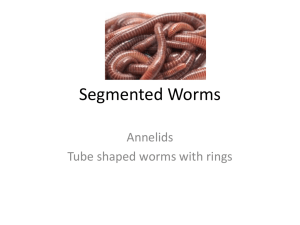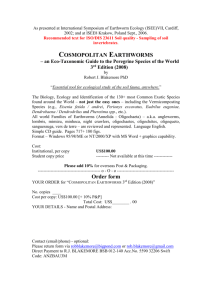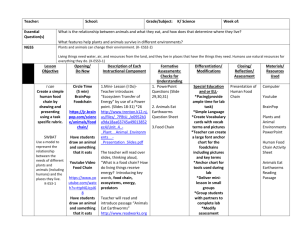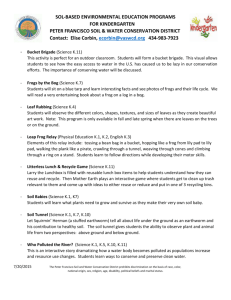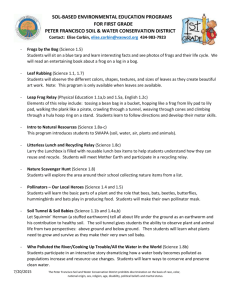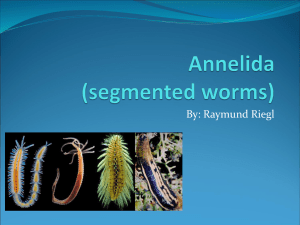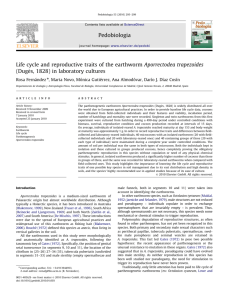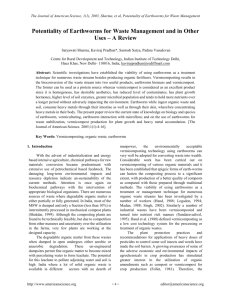The Effects of Soil Calcium on Invasive Earthworms in the
advertisement
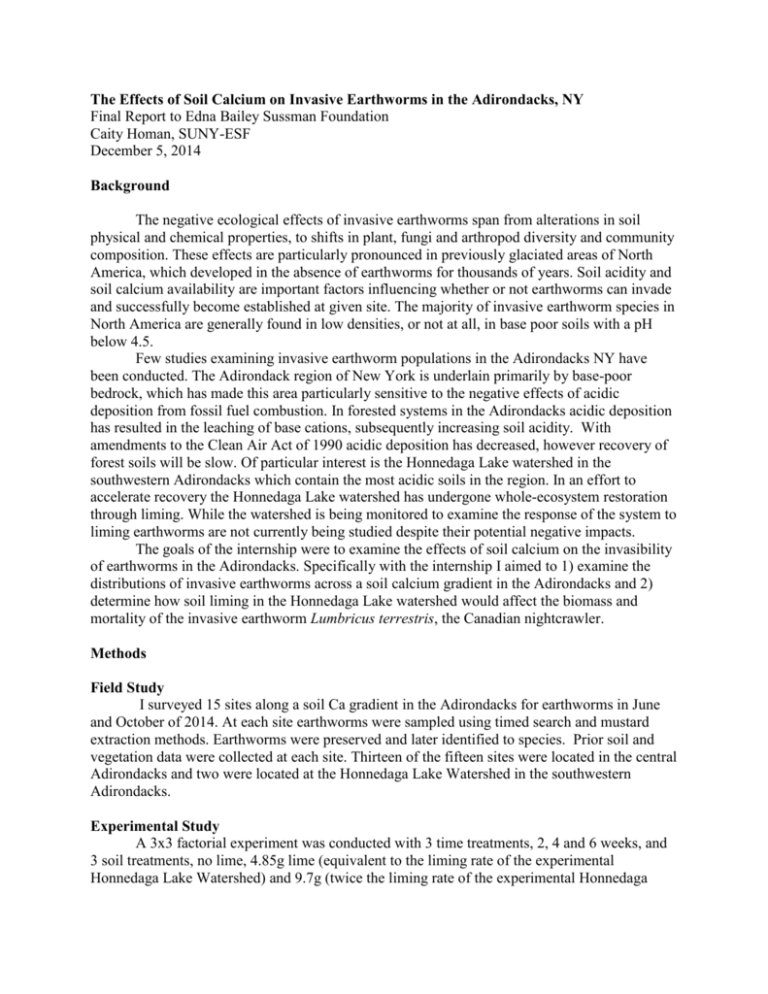
The Effects of Soil Calcium on Invasive Earthworms in the Adirondacks, NY Final Report to Edna Bailey Sussman Foundation Caity Homan, SUNY-ESF December 5, 2014 Background The negative ecological effects of invasive earthworms span from alterations in soil physical and chemical properties, to shifts in plant, fungi and arthropod diversity and community composition. These effects are particularly pronounced in previously glaciated areas of North America, which developed in the absence of earthworms for thousands of years. Soil acidity and soil calcium availability are important factors influencing whether or not earthworms can invade and successfully become established at given site. The majority of invasive earthworm species in North America are generally found in low densities, or not at all, in base poor soils with a pH below 4.5. Few studies examining invasive earthworm populations in the Adirondacks NY have been conducted. The Adirondack region of New York is underlain primarily by base-poor bedrock, which has made this area particularly sensitive to the negative effects of acidic deposition from fossil fuel combustion. In forested systems in the Adirondacks acidic deposition has resulted in the leaching of base cations, subsequently increasing soil acidity. With amendments to the Clean Air Act of 1990 acidic deposition has decreased, however recovery of forest soils will be slow. Of particular interest is the Honnedaga Lake watershed in the southwestern Adirondacks which contain the most acidic soils in the region. In an effort to accelerate recovery the Honnedaga Lake watershed has undergone whole-ecosystem restoration through liming. While the watershed is being monitored to examine the response of the system to liming earthworms are not currently being studied despite their potential negative impacts. The goals of the internship were to examine the effects of soil calcium on the invasibility of earthworms in the Adirondacks. Specifically with the internship I aimed to 1) examine the distributions of invasive earthworms across a soil calcium gradient in the Adirondacks and 2) determine how soil liming in the Honnedaga Lake watershed would affect the biomass and mortality of the invasive earthworm Lumbricus terrestris, the Canadian nightcrawler. Methods Field Study I surveyed 15 sites along a soil Ca gradient in the Adirondacks for earthworms in June and October of 2014. At each site earthworms were sampled using timed search and mustard extraction methods. Earthworms were preserved and later identified to species. Prior soil and vegetation data were collected at each site. Thirteen of the fifteen sites were located in the central Adirondacks and two were located at the Honnedaga Lake Watershed in the southwestern Adirondacks. Experimental Study A 3x3 factorial experiment was conducted with 3 time treatments, 2, 4 and 6 weeks, and 3 soil treatments, no lime, 4.85g lime (equivalent to the liming rate of the experimental Honnedaga Lake Watershed) and 9.7g (twice the liming rate of the experimental Honnedaga Lake Watershed). There were a total of 9 treatments with 6 replications for a total of 54 experimental units. In August 2014 soil was collected from the un-limed reference watershed at Honnedaga Lake. Soil was dried, mixed, sieved placed into containers. Lime treatments were dissolved in water and applied as a slurry to the surface of the mircrocosm. Leaf litter from the reference watershed was collected in August 2014 and ten grams were added to each microcosm. Two individuals of Lumbricus terrestris, purchased from Carolina Biological Supply, were weighed and added to each container. All microcosms were placed in a growth chamber. Microcosms were destructively sampled after 2, 4 or 6 weeks. At each sampling period earthworm survival and biomass were measured. The experiment began at the end of September and ran until the beginning of November. Preliminary Results Field Study Of the 15 sites sampled 6 sites had earthworms present in June and 4 sites had earthworms present in October. Sites where earthworms were present are locations with the largest amounts of soil Ca in relation to the gradient. No earthworms were present at locations with an Oa horizon calcium content below 18 cmol/kg. Earthworm identifications are currently being verified but thus far a total of 10 species were sampled in June and 7 were sampled in October. One native species was sampled at the site with the largest amount of available soil calcium in June. Experimental Study Earthworm mortality increased over time, and was greatest in the un-limed soil treatment. More earthworms survived in the 9.7g lime treatment as compared to the 4.85g lime treatment. Earthworm biomass loss was also greatest in the un-limed soil treatment, while biomass gains were greatest in the 9.7g lime treatment. Ongoing Work Earthworms will continue to be identified, to species when possible. All unknown specimens will be sent to an earthworm taxonomist for analysis. Soil from the earthworm liming experiment will be sent to USGS collaborators for chemistry analyses, including percent organic matter, base cation availability and pH. Statistical analyses will be conducted in order 1)create a model that best explains factors influencing earthworm distributions across the calcium gradient and 2) compare mean biomass and mortality across the earthworm experimental treatments. Acknowledgements I would like to thank the following people and organizations for providing essential support for my project: the Edna Bailey Sussman Foundation, my major professor Colin Beier, my committee members Pete Ducey and Tim McCay, my internship advisor Greg Lawrence of the USGS, Dan Josephson, the Moser family, and Patricia Dombrowski, Annie Homan, Sam Quinn, Angela Vitale and John Wiley for field work assistance. Sampling for earthworms using liquid mustard extraction at Honnedaga Lake. Soil from the reference watershed at Honnedaga Lake that was used in the earthworm experiment. Microcosm container used in the earthworm experiment. Surface of a limed microcosm after 2 weeks. Leaf litter has been consumed by earthworms, and castings (byproduct of earthworms consuming organic material) are present. Surface of an unlimed microcosm after 2 weeks, with no evidence of earthworm activity.


